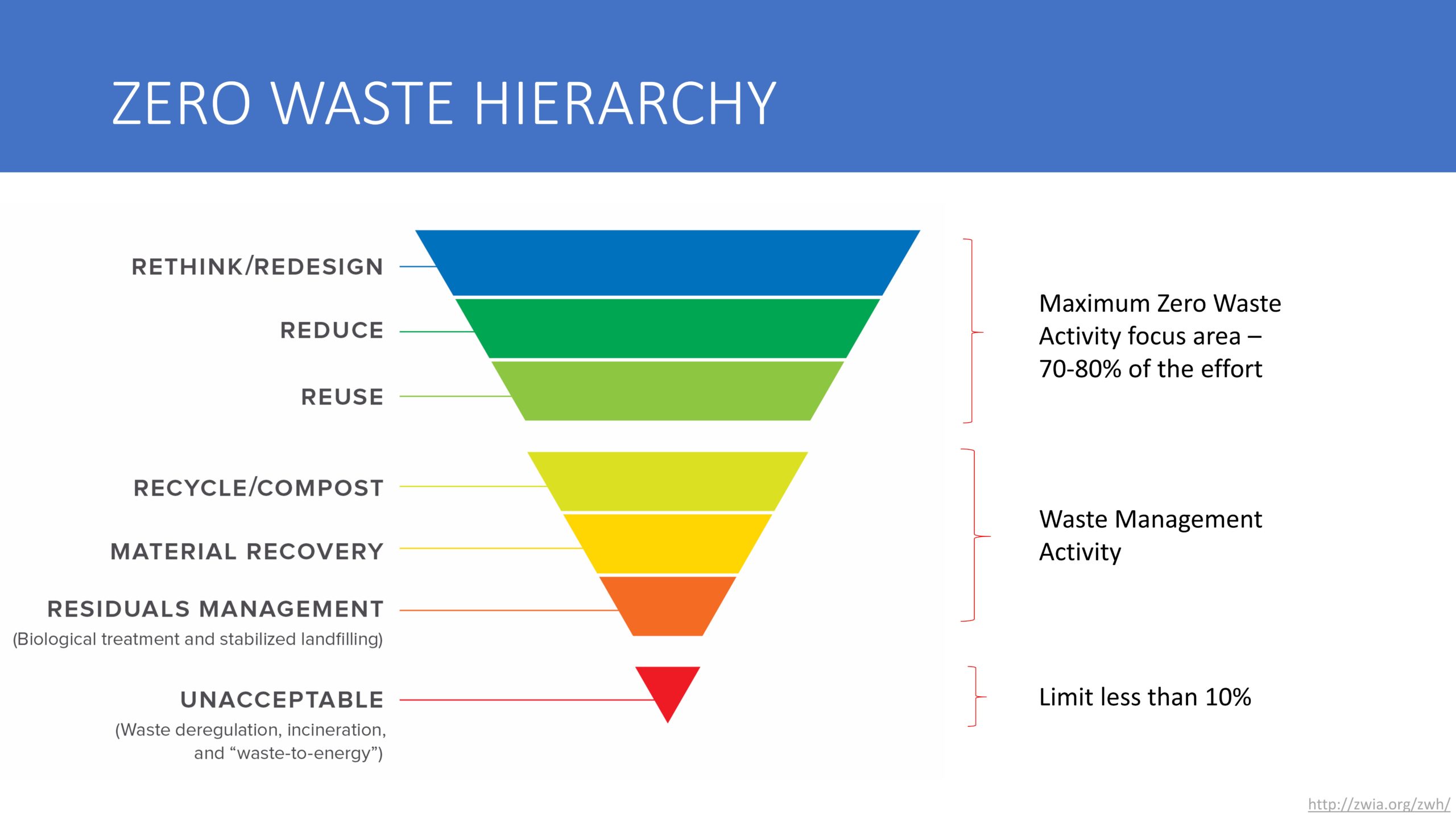India faces several challenges in managing its waste, with 50% of waste ending up as landfill. The COVID-19 pandemic has aggravated the waste crisis, with the increase in use of single-use materials as well as higher volumes of hazardous waste. Further, mixed waste has become a potential carrier of the coronavirus and poses many risks. While human safety and health is the priority, stop-gap solutions need to be replaced by sustainable strategies in the long-term.
This webinar examines practical and easy-to-implement zero waste strategies for the Post-COVID scenario in India. It features Hiren Bhagat, who leads the Waste Division at Environmental Design Solutions and Shobha Raghavan, Chief Operating Officer at Saahas Zero waste.
Zero Waste is achieved by reducing and recovering waste, eliminating incineration, and reducing landfill by 90% or more. The benefits include saving money, energy, resources, and greenhouse gas emissions. Strategies that look at redesigning products and processes and reducing and reusing waste are most effective at achieving the zero waste targets.
There are several guidelines and rating systems for achieving zero waste, like TRUE, Carbon Trust Standard for Zero Waste to Landfill, UL Environment and Zero Waste Validation. Recently, all Colgate manufacturing plants in India achieved the TRUE Zero Waste Platinum certification.
A typical zero waste facility has a zero-waste policy in place, diverts 90% waste from landfill, meets all regional laws for solid waste management and environmental regulations, limits contamination of waste leaving the facility to at least 10% and conducts annual waste audits.
Amdist the COVID-19 pandemic, waste management has become a huge concern. The virus can travel up to 1-2 metres via droplet transmission and settle on surfaces, remaining active for long periods. For example, it stays active for about 4 hours on paper, 24 hours on a cardboard surfaces, 2 days on wooden surfaces or clothing, 3 days on steel and plastic and about four days on glass.
As a result, there are very high chances of infection of waste materials, especially dry and recyclable materials. Waste mixed with infected waste material can transmit the virus to waste handlers and waste collectors. Further, waste volumes have gone up drastically due to the increase in the use of single-use materials. Stringent segregation of waste has become extremely important to manage waste safely. Next, the right sizing of bins based on the number of occupants in a building will help in tackling the increase in volume.
Waste must be first disinfected and stored before being handled or recycled. Typically, the recyclable waste from households and commercial facilities is transported by the pickup team to a Material recycling Facility (MRF). At the MRF, the waste is sorted based on quality and reusability. In the present time, when waste must be stored longer, 3 scenarios can play out. In the first scenario, segregated waste is stored up to 4 days and then handled and managed by waste pickers. This scenario has the least risk of transmission. In the second scenario , the recyclable waste material is transported the same day and is stored up to 4 days at MRF. Here, the risk of infected material is higher. The pickup team must follow safety guidelines while handling the waste bins. In the last scenario, waste is not stored and enters the waste chain. This puts waste collectors, handlers, and recyclers at high risk.
Both individuals and organizations must step in to take responsibility for their waste streams. A circular economy approach at an organizational level will tackle increased waste volumes while extracting useful resource of the waste. The Material Recovery facility is a crucial infrastructure in the circular economy cycle, that segregated and dispatches recyclable waste to different vendors. See and understand the operations at an MRF here- https://youtu.be/Bscv7Gx0hsU
Finally, municipal bodies have a great responsibility of ensuring proper disposal of waste at a city level. There are several policies that deal with waste management in India at the urban level. Recently, the Swachh Bharat Mission, initiated in 2014, has the single aim of making India cleaner. Other policies include Swachh Survekshan (National- Satiation Survey), Open defecation Policy (Towards zero open defecation in cities) and the Star Rating policy (to monitor the progress in waste management operations).
The pandemic has highlighted the urgent need to adopt a more sustainable lifestyle as a society by reducing consumption, protecting biodiversity, and incorporating small changes in our daily lives.
This webinar was conducted on 5th June 2020.



